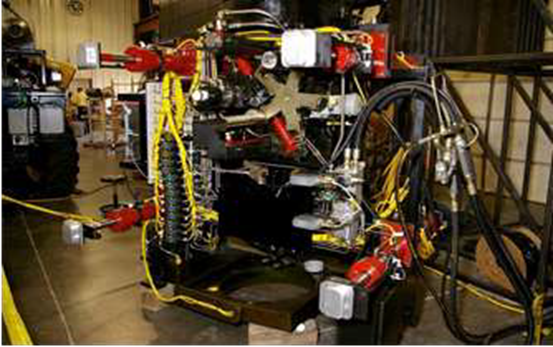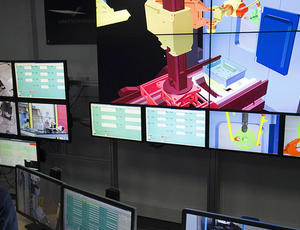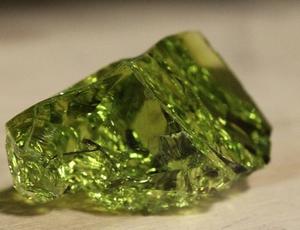Cutting-Edge Robotics Solve a Decades-Old Challenge

In October 1957, Great Britain suffered the worst nuclear accident in the country’s history when a devastating fire broke out in the Pile 1 reactor at the Windscale facility. Workers struggled to contain the blaze, which burned for three days and caused billows of radioactive contamination to spew across the UK and much of Europe. When the smoke cleared, it was evident that a site known for innovation – once the headquarters of the British atomic bomb project – would now become a complex and arduous clean-up site for years to come.
Decades later, in 2005, the United Kingdom Atomic Energy Authority (UKAEA) tapped the trusted expertise of our access team to provide engineering services to help speed up the decontamination and decommissioning of the Windscale Pile 1 reactor. They faced a substantial challenge: how to safely access and move burned radioactive fuel that was encased in a protective concrete shield around the Pile 1 reactor following the 1957 fire.
Results:
To approach the challenge of remotely removing the burned nuclear fuel from the Pile 1 reactor, we worked hand-in-hand with UKAEA and our partner CH2M Hill to design a custom robotics system and test its effectiveness in mock environments.
For this portion of the project, we developed a “virtual” safety and environment overview report, complete with animated renderings to explain the decommissioning strategy. We earned a UKAEA Innovation Award for this novel approach to communications for this complex project.
Looking Ahead
Now that the design, prototyping and testing is complete, work is expected to resume on the decommissioning project at Windscale Piles over the next several years. We are designing and testing data to provide a valuable benchmark for the project to re-launch when work begins on the next phase.
In future stages, reactor materials will be removed using a variety of remote tools consisting of mechanical cutting and material handling tools. A containment structure for processing the waste will be designed to include size segregation, weighing, encapsulation, packaging, waste stabilization, lidding and loading into a shielded flask for transportation and storage – in accordance with our recommendations.
Delivery of a GeoMelt® Waste Vitrification Plant for NNL at Sellafield, UK
In addition to this Access Remote Solution, in partnership with the NDA's National Nuclear Laboratory (NNL), we have installed a GeoMelt® vitrification system at Sellafield for the stabilization of nuclear waste. The system was commissioned and began processing radioactive waste in 2016.
We installed and commissioned a GeoMelt® In-Container Vitrification (ICV)™ plant at the National Nuclear Laboratory (NNL) Central Laboratory at the Sellafield Site in the UK. Sellafield is a former plutonium production facility, the site of the UK’s first nuclear power plant, and currently is a nuclear fuel reprocessing facility and nuclear decommissioning site.
Our GeoMelt® waste vitrification technology has been in commercial use since the 1990s for the treatment of radioactive and hazardous wastes in the USA, Japan and Australia. The GeoMelt® plant installation now brings the GeoMelt® technology to Europe, in partnership with the UK’s premier nuclear science and technology organization.
The installation of the GeoMelt® plant involved nuclearization and assembly of the melter and associated subsystems (power supply, pollution control, supervisory control and data acquisition) at NNL’s Central Laboratory B170 Active Rig Hall. The systems commissioning, completed in June 2016, consisted of performing a series of full-scale non-radioactive and radioactive melts to simulate waste treatment operations.
Looking Ahead
In June 2016, NNL and Veolia Nuclear Solutions successfully completed the radioactive commissioning phase, and the initial commercialization of the plant involved processing radioactively-contaminated soils from Hunterston A (Magnox power station), Bradwell (Magnox power station), Capenhurst (uranium enrichment plant), and Sellafield.
NNL and Veolia Nuclear Solutions have been contracted by the UK Nuclear Decommissioning Agency (NDA) for a series of melts to demonstrate treatment of a variety of waste streams. The first of these melts was completed in December 2016 with the bulk of the campaign to be carried out in 2017.
Nick Hanigan, NNL Director of Waste Management



